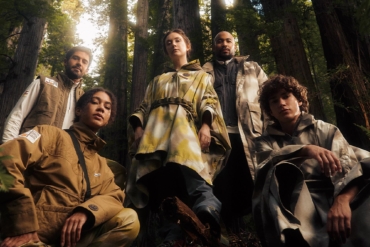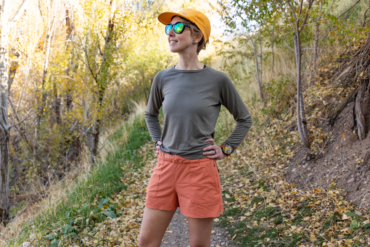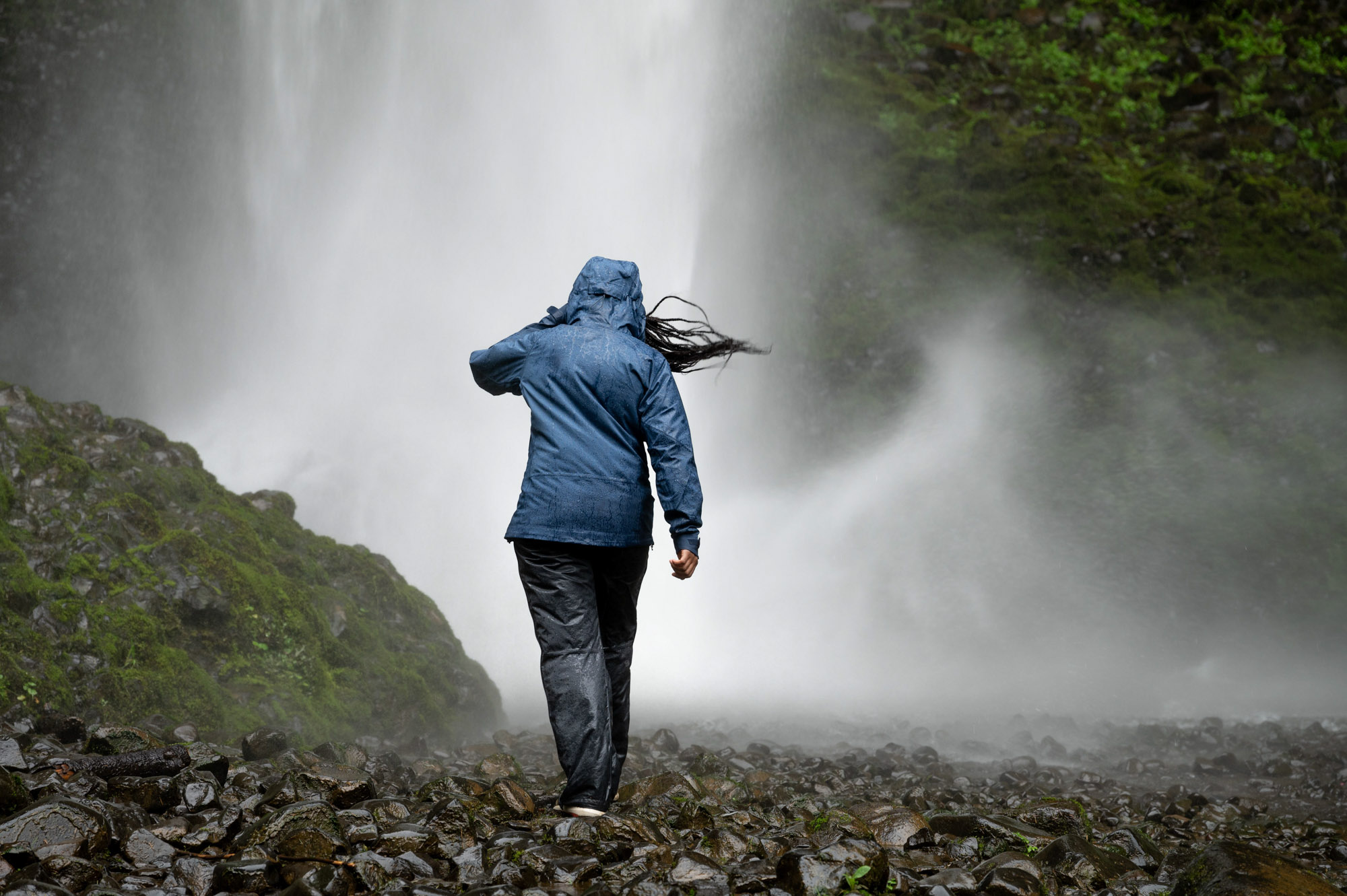The British company has a lengthy history of outfitting mountaineers, skiers, climbers, and alpine adventurers with well-crafted clothing that can take a pounding. They even make full-body suits for Everest expeditions and the like.
It was a bit of a head-scratcher when Rab announced plans to embark on an entirely different expedition earlier this year: a new collection of cycling apparel fine-tuned for gravel.
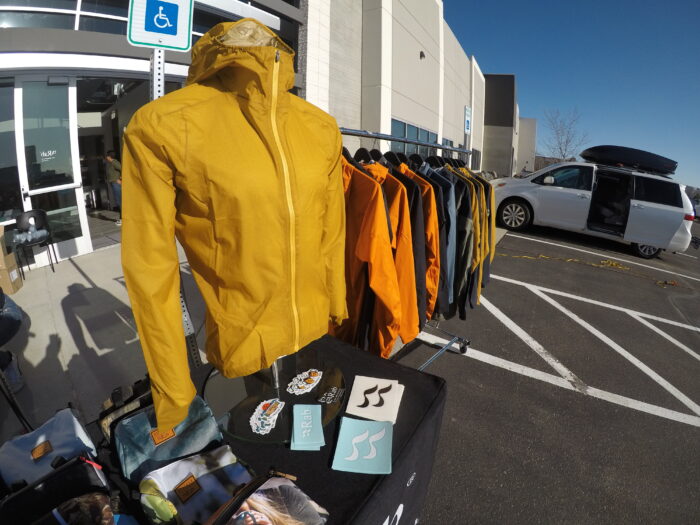
Rab’s Cinder line provides head-to-almost-toe overage for gravel crushers of every blush, including cargo bibs, shorts, pants, jerseys, and a variety of jackets that it promises will carry the same technical prowess as its mega-mountain gear. The only thing missing from the line is socks.
With a “don’t take it from us” mentality, Rab invited a handful of riders from across North America to put the new line through the paces in the Colorado Rockies.
I was lucky enough to hop in the saddle outfitted in the new gear for close to 100 gravel, single track, and road miles, along with nearly 5,000 feet of climbing.
As first impressions go, this stuff can shred.
In short: Rab has drawn upon its storied history in mountain sports to craft a line of reliable, thoughtful, and stylish gravel cycling apparel that holds up well in widely varying riding conditions. Riders can rest assured that they are protected if temperatures plunge.
RAB Cinder Range Design
Before I get into the nitty-gritty of reviewing each piece of gear, it’s essential to understand what the Cinder line is and isn’t.
The explosion of gravel in the past few years has attracted many roadies and race types to dirt who probably wouldn’t feel at home wearing Cinder apparel. The jerseys and jackets are not highly compressive or aero. They tend to be more flowy and loose to create a more comfortable feeling for long rides over days in less-than-ideal conditions.
That doesn’t mean that the line is not packed with well-thought-out and refined features. Those features are tailored to more extensive treks or adventuring, complementing the brand’s roots in mountaineering than something with a racier fit and style.
Bibs and Lowers
Few things matter more for big days in the saddle than a bib that is up to snuff. Rab’s Cinder Cargo Bib Short design incorporates an Elastic Interface Gravel Performance chamois that comes in gender-specific models. The pad itself is one of the few things Rab took from elsewhere rather than creating its own from scratch.
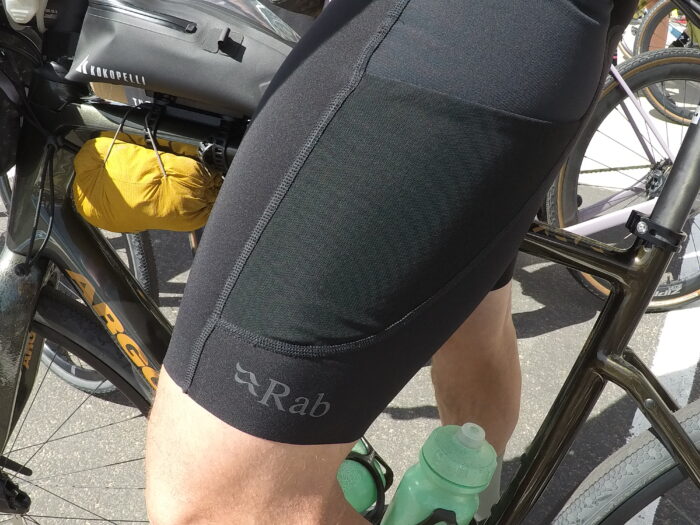
Rab says it tested more than 50 different pads before landing on the Elastic Interface, which it bills as a breathable option that isn’t too bulky. That held true over 2 days, even in warmer-than-expected conditions and abundant sweat.
Aside from the chamois, the Cinder Cargo Bib Shorts had plenty of room for storage. A large pocket on either leg offered enough room for a phone, wallet, keys, snacks, or whatever. Two additional smaller packets at the hip held other essentials like a multitool.

I found the hip stash pockets to be something of a revelation. Most of my gravel bibs include pockets on the back that force you to dig under your jersey to access them. It’s a bit awkward. These, however, were much easier to reach and didn’t layer equipment under other pockets.
The leg pockets on the bib seemed like they might lack a bit of security. The sweeping design of the pockets creates an arch that may not fit larger items. However, the lip of the elastic fabric at the top of the pocket is not sewn flush. It leaves a slight bend in the lip, creating a ridge to catch errant equipment.
Throughout 2 days in the bibs, I stashed a phone, wallet, keys, gloves, a camera, and snacks in the pockets. I never lost a single item.

The compression of the bibs performed well across the straps, lower back, and thighs. I felt no chafing or rubbing, although the cuff felt a little loose after 2 days of hammering the pedals. But with bibs that packed so much gear and kept my nethers feeling fresh after hours in the saddle, it feels a bit nit-picky.
If full bibs are too much, Rab also has Cinder Cargo shorts that drop the suspenders. It was just as lightweight and breathable as the bibs.

The bibs, which sell for MSRP $150, function perfectly alone, but they work seamlessly with the Cinder shorts and pants for those who like a little more coverage. Cinder Crank pants and shorts, which sell for MSRP $150 and $130, along with more robust waterproof Kinetic pants and shorts, go for MSRP $225 and $185. They include secure zipper pockets and a separate zipper that opens directly to the leg pockets on the bib so your gear is never inaccessible.
Jersey
The Rab Cinder Jersey was, in a word, comfy. As I said before, it isn’t super tight, but it shed moisture exceptionally well and has storage any rider would expect in a jersey and a bit more.

A key departure from what I normally expect in a jersey was the location of the rear pockets. The Cinder Jersey’s pockets are situated more off to the side than other jerseys I own and feel a bit angled down to allow for easier access.
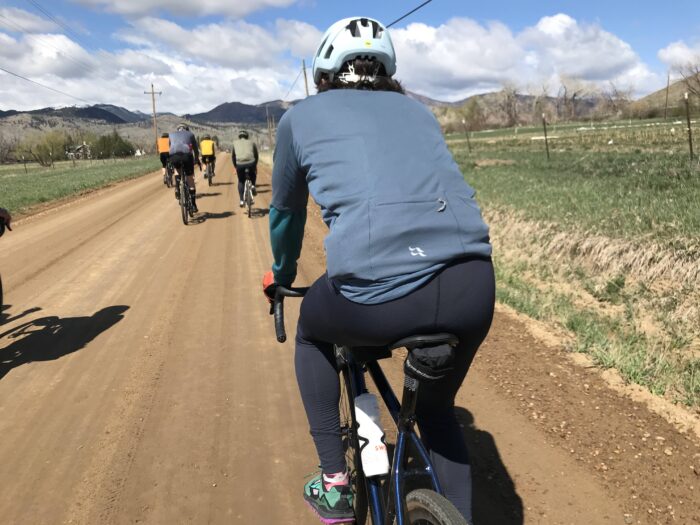
I usually struggle to get my arms up high enough to access pockets quickly and easily. With the Cinder Jersey, I could instantly find and access my gear without tweaking my shoulder or fumbling with an excessively tight elastic band.
As with the bibs, I had concerns about security here. Easy access generally translates to the possibility of losing gear on the trail. But, again, everything I put in the pockets throughout the day came home with me.
The Cinder Jersey, which sells for an MSRP of $130, also has an additional zipper-lock pocket on the back for can’t-lose items.
The main pocket on the back’s center was also big enough to store a riding jacket. So it fit the bill as a jersey intended for big rides in variable and unpredictable conditions.
Jackets
The Rab Cinder Bibs and Jerseys were solid pieces of equipment over the 2 days I spent in them. But the jackets marked a considerable step toward what I would consider a more refined product where you can feel Rab’s expertise built over decades in the mountains.
I’m a Texas boy and do not do well in the cold. Ask anyone. Rab offered up three different Cinder Jackets that kept me warm, dry, and not filled with dismay at the sight of a daunting cloud overhead or icy wind.
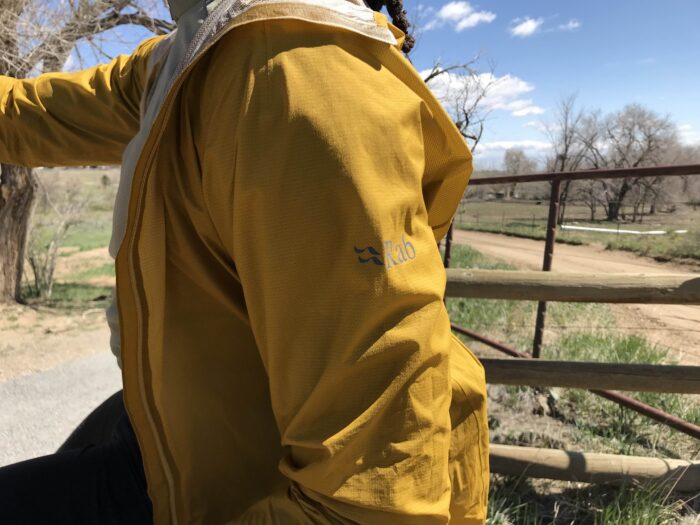
My favorite jacket in the bunch was the Cinder Phantom Waterproof Jacket, which sells for an MSRP of $225. This jacket is as lightweight and packable as they come. Rab includes a nifty stowaway stuff sack with elastic bands that can attach directly to a bike frame for quick and easy access when the rain rolls in.
I stuck mine under my top tube, so it was always within arm’s reach. Others had it mounted to their saddles. It all worked perfectly. If you’ve ever been caught in a sudden shower and forced to dig around in bags for your rain gear, the value of this feature will not escape you.
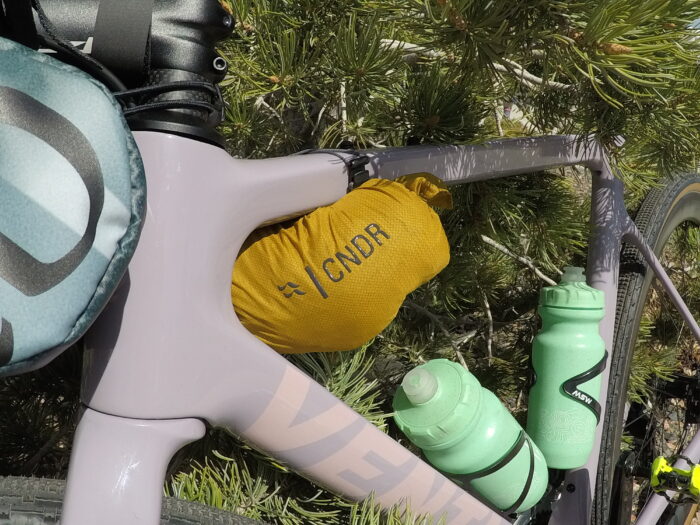
When the weather worsens, the Cinder Kinetic Waterproof Jacket can provide even more protection from the elements at a slightly higher price of MSRP of $255. The Kinetic features a membrane to keep moisture out and a stretchy fabric. It felt like a harder-shell rain barrier, but the flex made it much more comfortable and compliant on the bike. The Kinetic includes a front zipper pocket for small items and a larger rear pocket for anything else.
It features a hood that fits over a helmet and a semirigid piece of pliable material at the crest to divert water away from the face. The Phantom also offers that feature.
The membrane means that some moisture from your body can get trapped inside, so it needs to be colder before you throw this jacket on.
I wore the Kinetic jacket over a Cinder Jersey for about 2 hours with temperatures in the mid-40s, and it was a little too warm.
However, if the conditions were just slightly colder, or if we’d had any rainfall, this jacket would have seen me through with no problems.
These jackets also feature a cuff design that created a seal to keep water out and seamlessly interfaced with the extended wrists on Rab’s gloves.
For a guy who dislikes the cold and generally shies away from terrible riding conditions, I felt slightly disappointed to get great weather while riding with Rab. I was itching to see how these jackets held up in a downpour. But after experiencing only a brief and tiny flurry of snow during a climb and sporadic yet significant headwinds, it’s evident that these jackets can handle much more.
Final Thoughts on the Rab Cinder Range
The Rab Cinder range functioned well and seemed like a stellar option for gravel cyclists, bikepackers, and down-country or XC mountain bike types. I would add every item I tested to my wilderness wardrobe.
Rab also has more cycling gear in the works, including an impressive softshell, moisture-wicking jacket set to release in the fall. While the folks at Rab have long been known as “The Mountain People,” the Cinder line shows they also have the legs for two-wheeled adventuring.
Rather than outfit adventurers for when they get to the mountains, Rab can get them there, provided they’re down for the ride.


